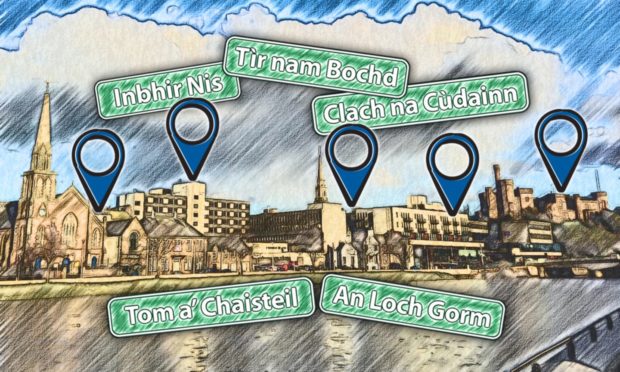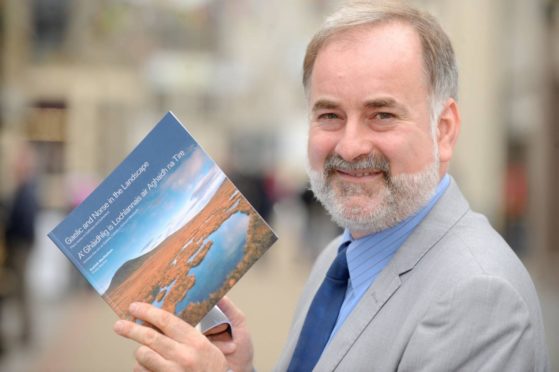The fascinating stories behind place names in Inverness have been revealed in an extensive new guide to Gaelic etymology compiled by author Roddy Maclean.
The guide, published by NatureScot, shows that many of the English names for different parts of the city have been derived from Gaelic, and those earlier terms often shed light on historical events or previous uses for space.
Of course, the name ‘Inverness’ itself originates in the Gaelic Inbhir Nis, simply meaning the mouth of the river Ness.
The Press & Journal has turned the information in the guide, which has the English title Place Names of Inverness and Surrounding Area, into a handy interactive map.
Explore it below.
One of the most intriguing etymologies in the city is the former fishing village of Clachnaharry, originally believed to be derived from Clach na h-Aire or “stone of the watch”.
This comes from the stone in the western end of the village, where a man would sit to watch the Ross-shire coast and raise the alarm if any unfriendly clans were spotted.
However, Roddy Mclean (Ruaridh McIlleathain) argues that the name comes from Clach na h-Aithrigh, meaning “stone of repentance”, as Catholics would have repeated paternosters around the stone at the time when that was the dominant religion.
Dalneigh, meanwhile, comes from Dail an Eich, meaning “the meadow of the horse” – the fact the English name has ‘neigh’ in it is a coincidence.
That area was originally Dalneich Farm, which the guide adds is the area in which the Frasers and Chisholms are traditionally said to have camped ahead of the Battle of Culloden in 1746.
‘Richness of our cultural heritage’
The guide provides many etymologies for place names beyond Inverness too, as far away as Fort George, Tomatin, Achnabat and Kirkhill.
Roddy said: “The place names of Inverness and its surrounds reflect the area’s variety of habitat and topography, ranging from peat-clad moorlands to gentle shorelines, and including farms, villages and features within the city’s urban landscape.
“As in most of the Highlands, the Gaelic language is dominant and I have attempted in the book to explain how Gaelic place names work and to encourage locals and visitors alike to explore the language in order to appreciate the richness of our cultural heritage.”
The project also received support from Bòrd na Gàidhlig, the principal public body for promoting Gaelic development in Scotland.
The body’s funding and projects officer, Steven Kellow, said: “Gaelic place names are an important part of the heritage of the language and often what sparks an interest for people to start learning Gaelic.
“We were delighted to support this project to promote the Gaelic heritage around Inverness and we are sure that this will inspire those in the area to learn the language.”
The full 211-page book can be downloaded from the NatureScot website, while a limited number of printed copies are also available on the Gaelic Books Council’s website.
A free virtual lecture on the most interesting findings to come out of research for the book is currently scheduled for September, with more details to follow in due course.
Spikkin Scots
Last year, the Press and Journal took its own look into the linguistics of one of Scotland’s native tongues.
The Spikkin Scots series put a spotlight on the different dialects of the Scots language that can be heard around the country.
Read the full story, look at our interactive map and try out our Scots quiz by clicking here.

